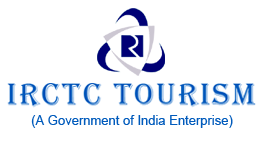Outstanding Universal Value
Rani-ki-Vav is an exceptional example of a distinctive form of subterranean water architecture of the Indian
subcontinent, the stepwell, which is located on the banks of the Saraswati River in Patan. Initially built as a
memorial in the 11th century CE, the stepwell was constructed as a religious as well as functional structure
and designed as an inverted temple highlighting the sanctity of water. Rani-ki-Vav is a single-component, water
management system divided into seven levels of stairs and sculptural panels of high artistic and aesthetic
quality. It is oriented in an east-west direction and combines all of the principle components of a stepwell,
including a stepped corridor beginning at ground level, a series of four pavilions with an increasing amount of
storeys towards the west, the tank, and the well in tunnel shaft form. More than five hundred principle
sculptures and over a thousand minor ones combine religious, mythological and secular imagery, often
referencing literary works.
Rani-ki-Vav impresses not only with its architectural structure and technological achievements in water
sourcing and structural stability, but also in particular with its sculptural decoration, of true artistic
mastery. The figurative motifs and sculptures, and the proportion of filled and empty spaces, provide the
stepwell's interior with its unique aesthetic character. The setting enhances these attributes in the way in
which the well descends suddenly from a plain plateau, which strengthens the perception of this space.
Criterion (i): Rani-ki-Vav (The Queen's Stepwell) at Patan, Gujarat, illustrates an example of
the artistic and technological height of stepwell tradition. It has been decorated with religious, mythological
and at times secular sculptures and reliefs, illustrating a true mastery of craftsmanship and figurative
expression. The stepwell represents an architectural monument of human creative genius in its variety of motifs
and its elegance of proportions, which frame an intriguing space, both functional and aesthetic.
Criterion (iv): Rani-ki-Vav is an outstanding example of a subterranean stepwell construction
and represents a prime example of an architectural type of water resource and storage system which is widely
distributed across the Indian subcontinent. It illustrates the technological, architectural and artistic mastery
achieved at a stage of human development when water was predominantly resourced from ground water streams and
reservoirs through access of communal wells. In the case of Rani-ki-Vav, the functional aspects of this
architectural typology were combined with a temple-like structure celebrating the sanctity of water as a
venerated natural element and the depiction of highest-quality Brahmanic deities.








